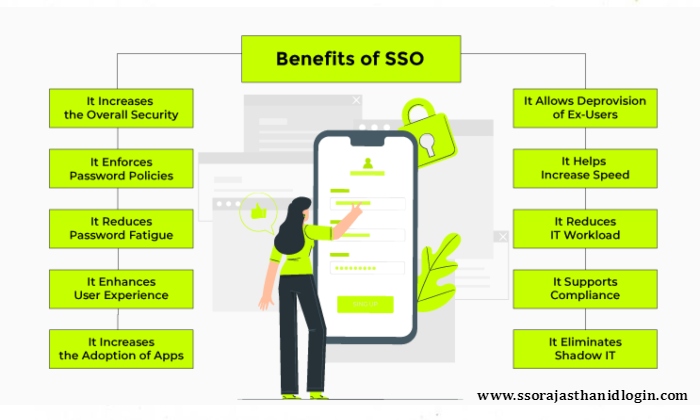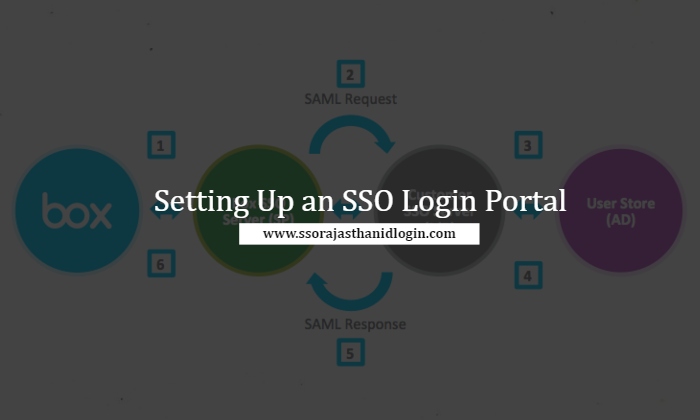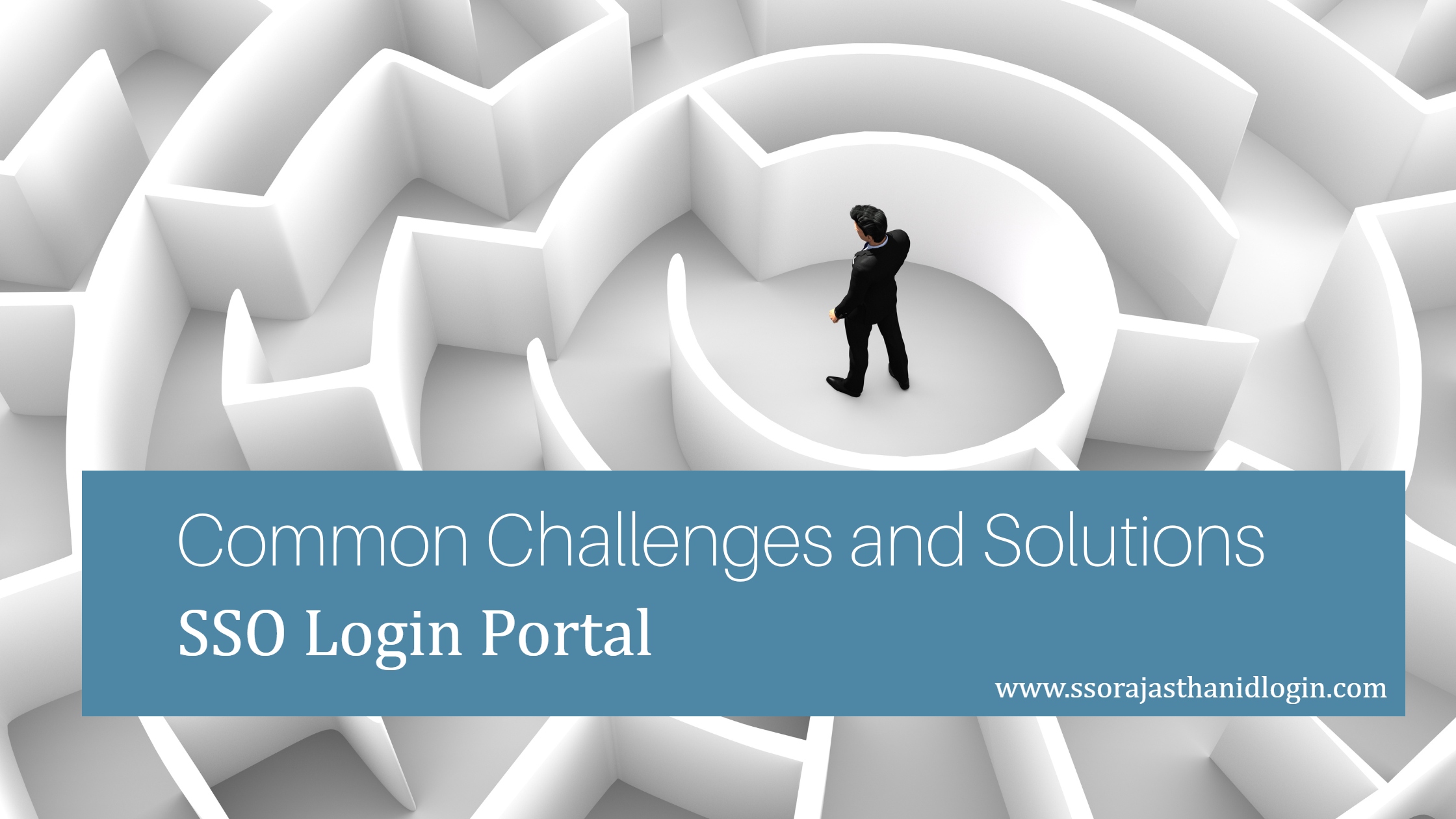SSO Login Portal: Key Features and Benefits for Modern Enterprises

Table of Content
SSO Login Portal Benefits, Features, and Implementation Tips
Explore The Benefits Of An Sso Login Portal For Streamlined Access Management. Learn How Single Sign-on Can Simplify Authentication Here
SSO Login Portal: Key Features and Benefits for Modern Enterprises
SSO Login Portal A unified system called an SSO (Single Sign-On) Login Portal enables users to access several apps and services using only one set of login credentials. Users only need to manage one login to effortlessly access all of their authorised services, saving them from having to keep track of several usernames and passwords for different applications. By centralising authentication, this method improves security while streamlining the user experience.
Key Benefits of an SSO Login Portal
1. Simplified User Experience
An SSO Login Portal's main benefit is that it makes the login procedure simpler. This minimises password fatigue and lowers the risk of password-related problems because users only need to remember one set of login information. Increased productivity and user satisfaction result from this efficient method, which also reduces frustration and saves time.
2. Enhanced Security
Organisations can increase security by having fewer passwords for users to remember when they utilise an SSO LOGIN PORTAL. This reduces the possibility of phishing attacks and lowers the risk of using weak or repeated passwords. Furthermore, multi-factor authentication (MFA), which requires additional verification methods, is frequently supported by SSO systems, offering an additional layer of protection.
3. Centralized Access Management
IT managers have a centralised platform to manage user access with an SSO LOGIN PORTAL. Controlling access, enforcing security regulations, and carrying out audits are all made simpler by this. To guarantee that users always have the proper access privileges, administrators can easily grant or revoke access to a variety of applications.
4. Reduced IT Costs
IT departments may save money by putting in place an SSO LOGIN PORTAL. Organisations can save administrative overhead and support expenses by decreasing the volume of password-related support requests and optimising user management procedures.
 SSO LOGIN PORTAL Benefits
SSO LOGIN PORTAL BenefitsHow SSO Login Portals Work
1. The Authentication Process
The SSO LOGIN PORTAL authenticates users when they try to access an application. The portal generates an authentication token that allows access to the requested application if the credentials are genuine. After that, users won't have to check in again to access all of their approved apps.
2. Application Integration
Using common protocols like SAML (Security Assertion Markup Language), OAuth (Open Authorisation), and OpenID Connect, SSO LOGIN PORTALs interface with a wide range of apps. The secure connection between the apps and the SSO system is made possible by these protocols, which provide easy authorisation and authentication.
3. Single Sign-On Portal
From the SSO LOGIN PORTAL, users may access all of their connected applications in one convenient location. Users can navigate the organization's many services with a unified experience by customising this portal to meet their branding.
 SSO LOGIN PORTAL Work Details
SSO LOGIN PORTAL Work DetailsSetting Up an SSO Login Portal
1. Initial Setup and Configuration
Selecting an SSO solution that meets the demands of your company is the first step towards setting up an SSO Login Portal. Define access policies and integrate the system with your current user directory to configure it. Typically, this setup procedure entails connecting with your apps, assigning user roles, and establishing authentication methods.
2. Integration of Applications
Configure your applications to use the SSO authentication protocols in order to integrate them with the SSO LOGIN PORTAL. Configuring application settings, establishing SSO connections, and making sure authentication tokens are handled correctly are all part of this procedure.
3. User Management
Keep your user data current by syncing it with the SSO LOGIN PORTAL from your user directory. You can simply manage access to different applications by using the administrative interface of the SSO portal to manage user roles and permissions.
4. Enabling Multi-Factor Authentication (MFA)
In the SSO LOGIN PORTAL, enable MFA for additional security. To make sure that only authorised users can access your applications, configure extra verification methods like SMS codes, email confirmations, or authentication apps.
 SSO LOGIN PORTAL Update
SSO LOGIN PORTAL UpdateBest Practices for Using an SSO Login Portal
1. Regularly Review and Update Access Permissions
Verify that user access rights are still suitable by conducting routine audits of them. As user roles or organisational structures change, access rights are updated accordingly.
2. Implement Strong MFA Policies
Make sure that MFA is applied to all users, particularly to those who are accessing vital apps or sensitive data. Select multi-factor authentication techniques that offer a sensible mix of security and user-friendliness.
3. Educate Users on Security Best Practices
Provide training for users on how to recognize phishing attempts, create strong passwords, and use MFA effectively. An informed user base is crucial for maintaining overall security.
4. Monitor and Respond to Security Incidents
Keep an eye out for any strange activity or possible security events on the SSO LOGIN PORTAL at all times. Establish a reaction strategy to deal with any problems that may come up and guarantee that the gateway stays safe.
Common Challenges and Solutions
1. Integration Challenges
It can be difficult to integrate legacy programs with an SSO LOGIN PORTAL. When addressing incompatibilities, collaborate with your SSO provider and think about employing bespoke integrations or API solutions to fill in the gaps.
2. User Opposition to Change
It's possible that some users won't accept a new login procedure. To facilitate the transition, properly explain the advantages of the SSO LOGIN PORTAL and offer sufficient training and assistance.
3. Handling Complexity in MFA
MFA may make the login procedure more difficult. Select MFA techniques that are easy to use and offer concise guidance to assist users in completing the extra verification procedures.
 About SSO LOGIN PORTAL
About SSO LOGIN PORTALConclusion
An SSO Login Portal is a powerful tool for simplifying user access and enhancing security within an organization. By centralizing authentication, reducing password management issues, and providing a seamless user experience, SSO Login Portals help organizations streamline access management and improve overall security. As technology continues to advance, SSO solutions will evolve to offer even greater benefits, making them an essential component of modern IT infrastructure.
FAQ (Frequently Asked Questions)
A system that lets users access numerous apps and services with a single set of login credentials is called an SSO (Single Sign-On) Login Portal. By allowing users to log in once and access all authorised services without having to log in separately for each one, it streamlines the authentication process.
By lowering the quantity of passwords users must remember and thus decreasing the chance of weak or repurposed passwords, SSO increases security. In order to provide further security layers, it can be combined with multi-factor authentication (MFA) to reduce the likelihood of phishing attempts.
Simplified user experience, improved security, centralised access management, and lower IT expenses are among the primary advantages. It is easier and more secure for users to log in because they only need to remember one set of credentials.
In order to facilitate communication between the SSO system and the linked apps, common authentication protocols like SAML, OAuth, or OpenID Connect are used. The SSO portal creates an authentication token upon user login, which allows access to all approved applications.
Using established protocols, the majority of contemporary programs offer SSO integration. To allow SSO capability, however, integrating outdated or custom apps could call for extra effort or specialised API solutions.
By forcing users to submit additional verification methods—like SMS codes, email confirmations, or authentication apps—before gaining access, MFA strengthens the security of the SSO Login Portal. In this way, it is made possible for only authorised people to log in.